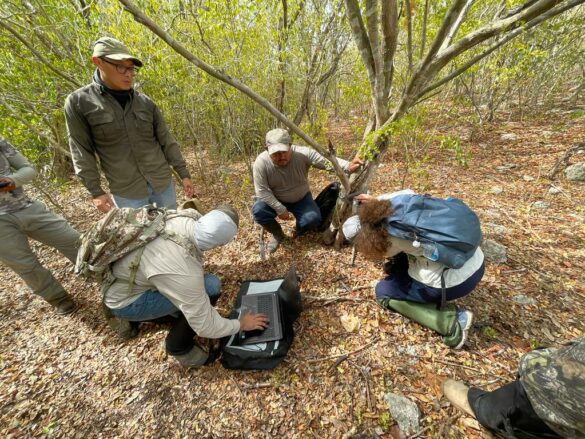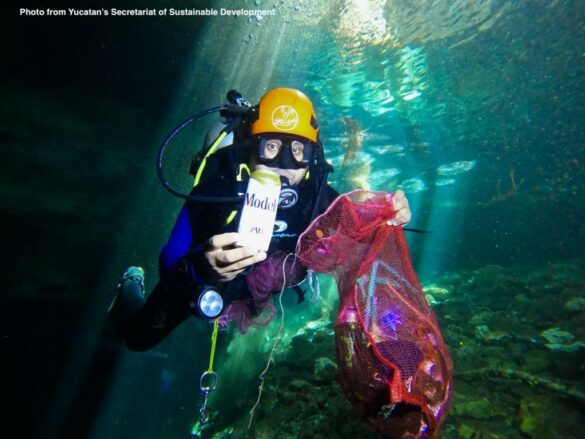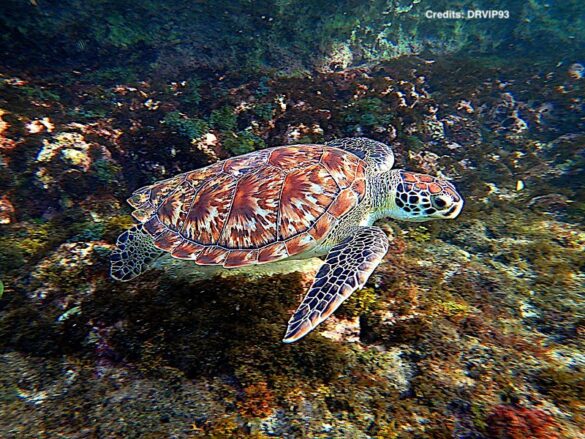The Biodiversity Observatory of Yucatan aims to accelerate the effective conservation and regeneration of biodiversity and ecosystem health by strengthening the monitoring, conservation, and understanding of the effects of climate change on priority ecosystems and species in the coastal ecosystem zone of the Yucatan Peninsula.
Background
Dzilam State Reserve is a nationally and internationally recognized area under the RAMSAR (sites of international importance for the conservation and sustainable use of wetlands inhabited by migratory waterfowl) and AICA (Important Bird Area) designations. In addition, with nearly 19,000 hectares of mangroves, the Dzilam State Reserve acts as an important carbon sink in the region.
However, globally, in the last 35 years these ecosystems have been threatened by various human activities, such as agriculture, livestock, aquaculture, and tourism. The expansion of agriculture in the surrounding areas of the reserve has resulted in deforestation and the conversion of land for cultivation, which has led to the loss of natural habitats and fragmentation of the landscape. Nearby agricultural crops can generate pollutants, such as agricultural chemicals and fertilizers, which can affect the reserve’s water quality. Cattle ranching has also had a negative impact on the reserve. Overgrazing can cause soil degradation and erosion, affecting natural ecosystems and vegetation. In addition, cattle ranching can generate pollution from manure and animal waste, which affects water quality and the health of local species. In terms of aquaculture, the expansion of aquaculture farms in the region may involve the destruction of mangrove areas, which are critical ecosystems for the reserve. Intensive aquaculture practices, such as the use of chemicals and medications, can generate contamination and affect the health of aquatic ecosystems. Finally, tourism has also put pressure on the reserve. The development of tourism infrastructure can cause alteration of natural habitats, coastal degradation, and disturbance of local species. In addition, increased tourism can result in increased demand for natural resources, such as fisheries and mangroves, which can lead to overexploitation if not properly managed. These specific threats derived from agricultural, livestock, aquaculture and tourism activities represent significant challenges for Dzilam State Reserve.
This is why this area is a key area to pilot the use of technology for its conservation and effective management. Its diversity of ecosystems presents the potential for fertile and replicable interventions that demonstrate the power of technology to support science-based decision making directed towards conservation and restoration actions, as well as the subsequent monitoring of these actions to ensure transparency of results and their overall success.
Another distinctive aspect of the Dzilam State Reserve is its importance as a habitat for the jaguar (Panthera onca), an emblematic and endangered species. The reserve is located within the Yucatán Peninsula and is home to the most important jaguar population in Mexico. Its conservation is essential to guarantee the survival of this species in the region. The presence of jaguars in the reserve highlights its importance as a Jaguar Conservation Priority Area and underscores the need to implement measures to protect and preserve their habitat.
Using innovative technology to monitor the Reserve
Dzilam State Reserve has implemented a series of innovative and technological activities to improve the conservation and effective management of its ecosystems. These initiatives have demonstrated the power of technology to support science-based decision making and encourage conservation and restoration actions.
Some of the key activities include:
- Eco-acoustic monitoring: the reserve has implemented a comprehensive monitoring system using more than 60 Rainforest Connection Edge Audio Recorder Kit devices. These devices collect and analyze data offline, allowing stakeholders and the local community to understand the impacts of climate change on ecosystems through analysis of the local soundscape. This monitoring approach provides valuable tools for informed decision making in the conservation and restoration of the reserve.
- Camera traps and processing algorithms: Camera traps have been installed in the reserve to monitor key species, such as the jaguar. These cameras capture images and videos of wildlife, and image processing algorithms are being developed to efficiently identify and classify jaguars. This technological approach improves monitoring efficiency and provides valuable data on the distribution and behavior of jaguars in the reserve.
Associations and partnerships
- C Minds: Logistics, data collection in the fieldThe International Union for Conservation of Nature (IUCN): funding.
- The Government of Yucatan: through the SDS with logistics and personnel for installation and review of equipment in the field, cabinet work.
- Huawei’s Tech4All: provision of equipment
- In collaboration with the Polytechnic University of Yucatan: creation of algorithms and data processing.
- Rainforest Connection participation: creation of algorithms and data processing
Results so far
Some of the results of the monitoring are as follows:
- Number of jaguars detected: 5
- Species richness (detected by camera traps and acoustic monitoring): 88 birds, 221; mammals, 5 reptiles and 4 amphibians.
- Successful collection of acoustic data (more than 400,000 recordings) for the rainy season.
- Number of species included in Pattern Matching/CNN acoustic models: 58.
- Threatened, vulnerable and endangered species: according to NOM-059-SEMARNAT-2010: 21; according to the IUCN Red List of Threatened Species: 12.
Impacts on species, ecosystems, science and people
The main impacts have been:
- Conservation of emblematic species: the Observatory contributes to the conservation of emblematic species such as the jaguar, which represents one of the main conservation priorities in the Yucatan Peninsula. Through the monitoring and tracking of these felines, we have obtained valuable data on their presence, behavior, and conservation status in the reserve.
- Preservation of unique ecosystems: The Dzilam State Reserve is home to a diversity of unique ecosystems, such as mangroves and wetlands, which play a vital role in biodiversity conservation and climate change mitigation. The Observatory contributes to the preservation and monitoring of these ecosystems, generating crucial information for their long-term management and protection.
- Generation of scientific knowledge: Through monitoring and data collection activities, the Observatory has enabled the generation of scientific knowledge about the flora and fauna present in the reserve. This has enriched the understanding of the ecosystems and has facilitated informed decision-making for their conservation and management.
- This project also seeks to potentially contribute to generating information on other species on the IUCN Red List of threatened species (i.e. Ateles geoffroyi), according to the Integrated Biodiversity Assessment Tool (IBAT).
- Community participation and empowerment: The Observatory has promoted the active participation of local communities in monitoring and conservation activities. This has strengthened ties between the reserve and the communities, fostering a sense of ownership and shared responsibility for the protection of natural resources.
- Environmental awareness: The Observatory has increased awareness of the importance of conservation and sustainable management of the reserve’s natural resources. This has contributed to the formation of a culture of respect and care for the natural environment, ensuring the transmission of these values to future generations.
- Promoting technology: The Observatory has promoted the adoption of technology for the management and monitoring of the reserve, making society aware of the potential and importance of incorporating and working with new technologies.
The Secretary of Sustainable Development of the State of Yucatan has the rights to all of the photos and videos.









